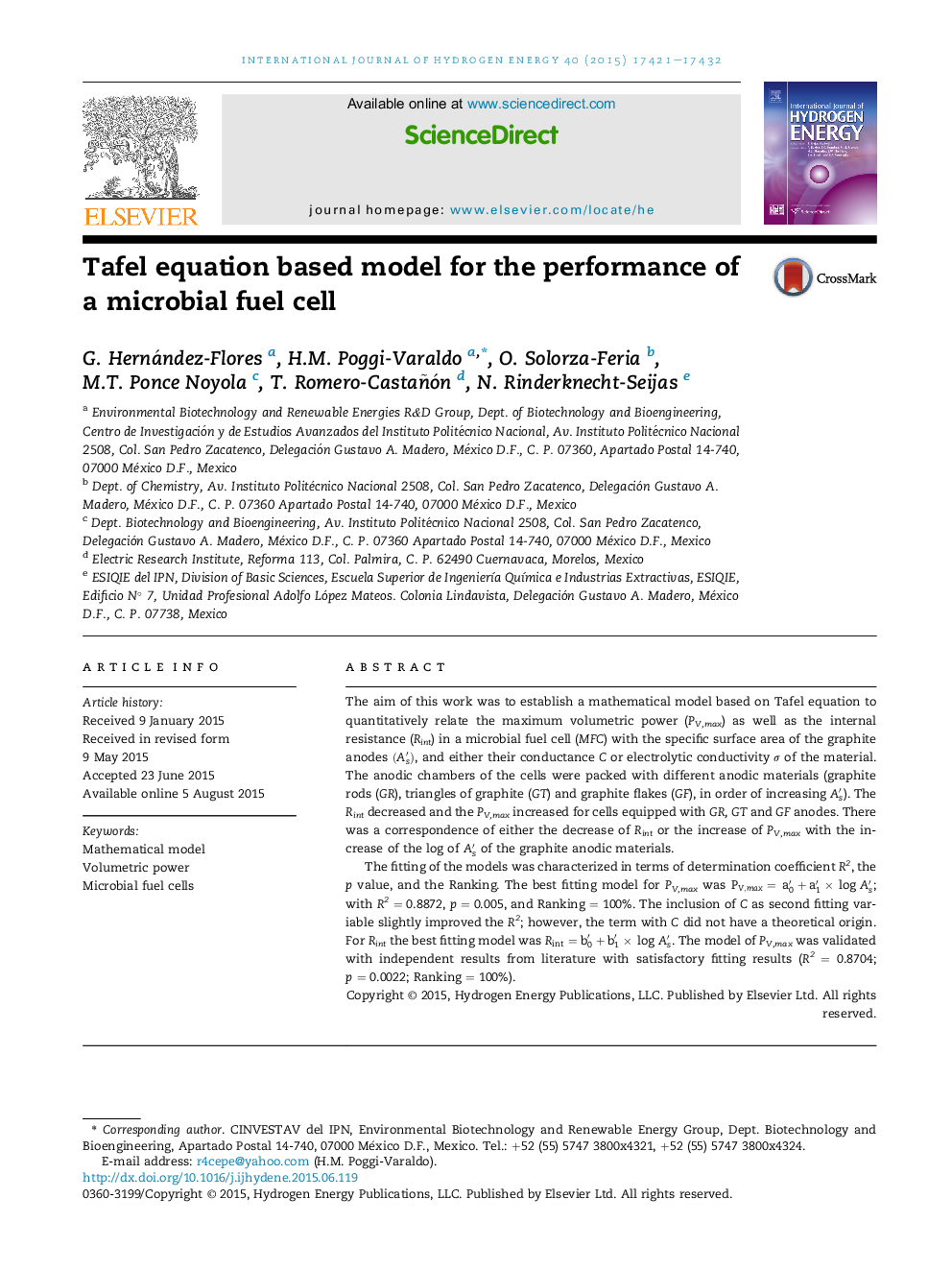| Article ID | Journal | Published Year | Pages | File Type |
|---|---|---|---|---|
| 1269033 | International Journal of Hydrogen Energy | 2015 | 12 Pages |
•A mathematical model based on Tafel equation was developed for MFC.•It related PV,max and Rint with the specific surface area of graphite anodes As′.•Models of the form Y=a0′+a1′×logAs′ fitted well experimental results R2 = 0.89.•Inclusion of conductance increased R2 of PV,max but not in the model of Rint.•Inclusion of conductivity σ did not improve model fitting.
The aim of this work was to establish a mathematical model based on Tafel equation to quantitatively relate the maximum volumetric power (PV,max) as well as the internal resistance (Rint) in a microbial fuel cell (MFC ) with the specific surface area of the graphite anodes (As′), and either their conductance C or electrolytic conductivity σ of the material. The anodic chambers of the cells were packed with different anodic materials (graphite rods (GR), triangles of graphite (GT) and graphite flakes (GF ), in order of increasing As′). The Rint decreased and the PV,max increased for cells equipped with GR, GT and GF anodes. There was a correspondence of either the decrease of Rint or the increase of PV,max with the increase of the log of As′ of the graphite anodic materials.The fitting of the models was characterized in terms of determination coefficient R2, the p value, and the Ranking. The best fitting model for PV,max was PV,max=a0′+a1′×logAs′; with R2 = 0.8872, p = 0.005, and Ranking = 100%. The inclusion of C as second fitting variable slightly improved the R2; however, the term with C did not have a theoretical origin. For Rint the best fitting model was Rint=b0′+b1′×logAs′. The model of PV,max was validated with independent results from literature with satisfactory fitting results (R2 = 0.8704; p = 0.0022; Ranking = 100%).
Graphical abstractFigure optionsDownload full-size imageDownload as PowerPoint slide
